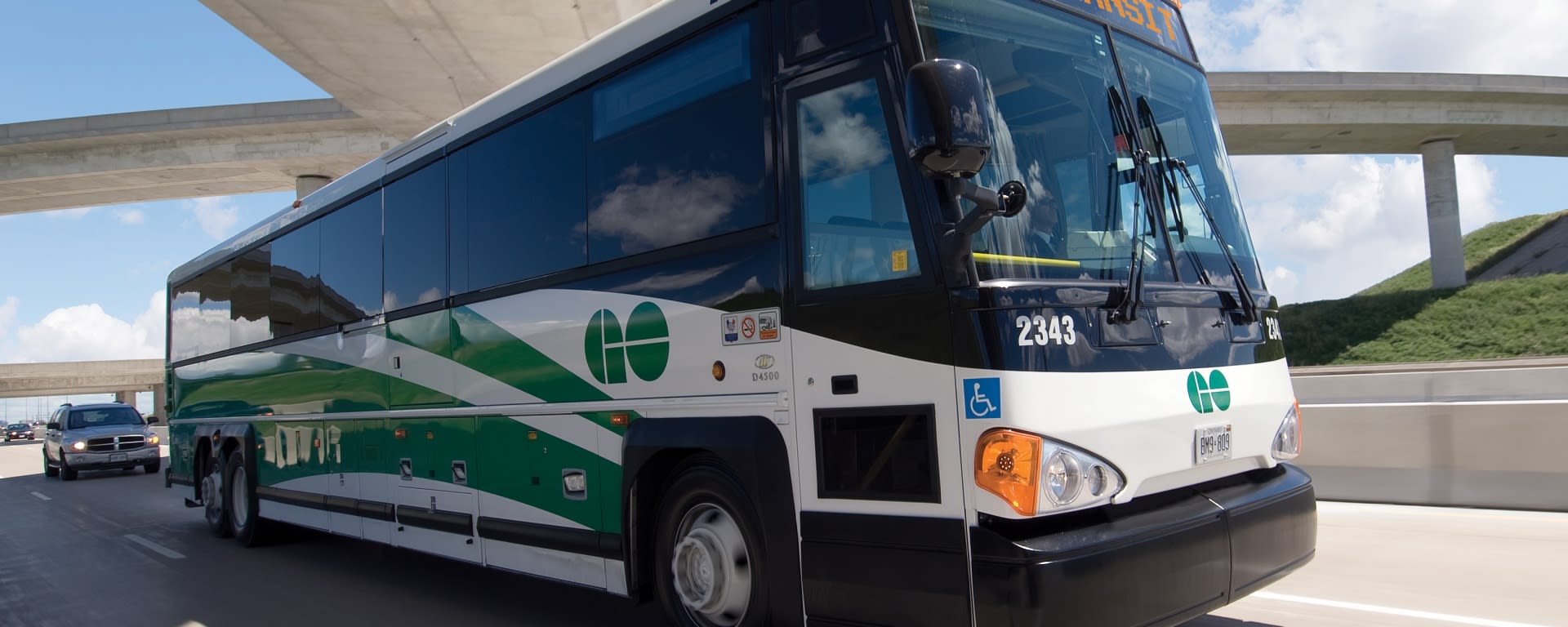VIDEO: See 50 years of GO bus evolution in under a minute
It’s been an ever-changing journey for the GO Bus, which recently celebrated 50 years of service.
Sep 23, 2020
Rocky and The Godfather were the new kids on the block – a decade before New Kids on the Block hit radio.
Bell bottom pants went wide, platform shoes went high and Richard Pryor had the world in stitches.
The 1970s saw remarkable and memorable milestones – though some endured better than those bell bottoms.
That includes the start of the GO bus system.
We’ve been looking back in a series of stories, after the transit bus system recently celebrated 50 years of moving customers around Ontario’s Golden Horseshoe Region.
We’ve drawn back the years – actually compressed time a bit – to show you, in an animated way, the different GO bus versions you, your parents or grandparents may have ridden in over the decades.
It’s an interesting look at a change in function, as well as style.
GO transit first started moving people on the road thanks to a concept called ‘Dial-A-Bus’. Think of it as the Uber of the 1970s. After calling in advance, a mini van would come pick you up right at your doorstep. It took passengers to malls, train stations and transit terminals along a specific route.
Dial-A-Bus ran until 1976 and would cost you just $0.35 to get around.
A GO Transit Ford Econoline passenger van operating in dial-a-bus service in the Pickering area in the early 1970’s. The service brought them to major transfer points and terminals such as malls, train stations, and transit terminals. (Metrolinx Photo)
In 1970, the first GO buses were unveiled at Queen’s Park, and the service linked Oshawa on the east and Hamilton on the west, with a bus commuter service running north to Newmarket from Toronto.
GO’s first fleet was the GMC ‘New Look’ buses, a model used by many transit agencies at the time, including the TTC. They looked like ‘fishbowls’ and earned that as a nickname.
The ‘fish bowl’ buses could only hold 33 passengers at the time. GO’s single-coach level buses today can seat 57. (Metrolinx Photo)
As the years went on, GO Transit introduced coach buses, specifically designed for highways and longer commutes. The MCI 102-A2 and then the MCI D4500 series came in the fold, making the service more accessible and accommodating to even more passengers.
By the mid 2000s, The Enviro 500 Double-deckers, by the manufacturer Alexander Dennis, were introduced with a special geo-fencing system, warning the operator and dispatch if a bus went off an approved route, and shut down the bus, if necessary.
Brand new GO Transit Double-decker 8001, part of GO’s first order, undergoes test runs and driver training at Bramalea GO station in April 2008, prior to the fleet entering service. (Dan Dell’Unto photo)
The double-deckers could carry more passenger – 78 compared to the 57 on a standard single-level coach bus.
But the first double-deckers were limited to where they could go due to height clearance issues. They were restricted to operating on a set of routes that ran across the Highway 403/407 corridor, and on seasonal runs from Burlington to Niagara Falls.
In 2012, GO Transit decided it was time to raise the bat by lowering the height.
The new Enviro 500 SuperLo buses measured 12.8 feet in height, allowing them to now access both the Union Station Bus Terminal and the Yorkdale Bus Terminal.
Now in its third generation, the current double-decker buses are a staple of GO’s fleet is longer and can carry up to 81 passengers. (Metrolinx Photo)
In the 50 years of service, the GO Bus experienced a period of extraordinary growth, most notably the expansion of the popular Highway 407 services as well as increased trips on the legacy routes.
“It’s a feeling of pride when I see them everywhere,” says Eve Wiggins, vice-president of Bus Services at Metrolinx.
”We built a reputation over the years for providing an outstanding, reliable and friendly transportation service to passengers.”
That’s not something that happened overnight. Wiggins says the success of the GO Bus is thanks to the dedicated teams that work to get the buses on the road.
From the fuelers, service persons, coach techs, rovers, plant service and mechanics, millwrights, electricians, HVAC techs, supervisors and superintendents, there are countless people involved with GO’s bus operations who, beyond their driver, most customers will never meet.
Generations have counted on them.
From students and commuters to essential workers during this pandemic, the goal for the transit agency is to continue to be a reliable and friendly service so many depend on.
“It is an amazing story that GO bus has become an icon for the GTA and beyond over the last 50 years,” says Ian Smith, chief operating officer at Metrolinx.
“Over the next 12 months we shall be celebrating the 50 years of GO Bus and share exiting plans for its future.” And things keep rolling along, toward the hundred year mark – when those platform boots will be in style again.
by Nitish Bissonauth Metrolinx bilingual editorial content advisor
